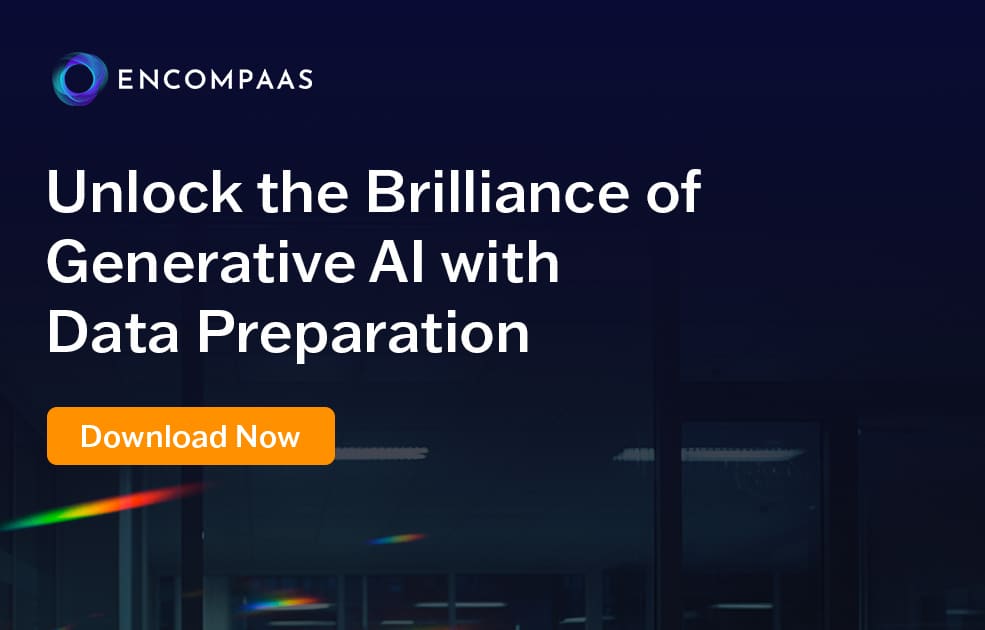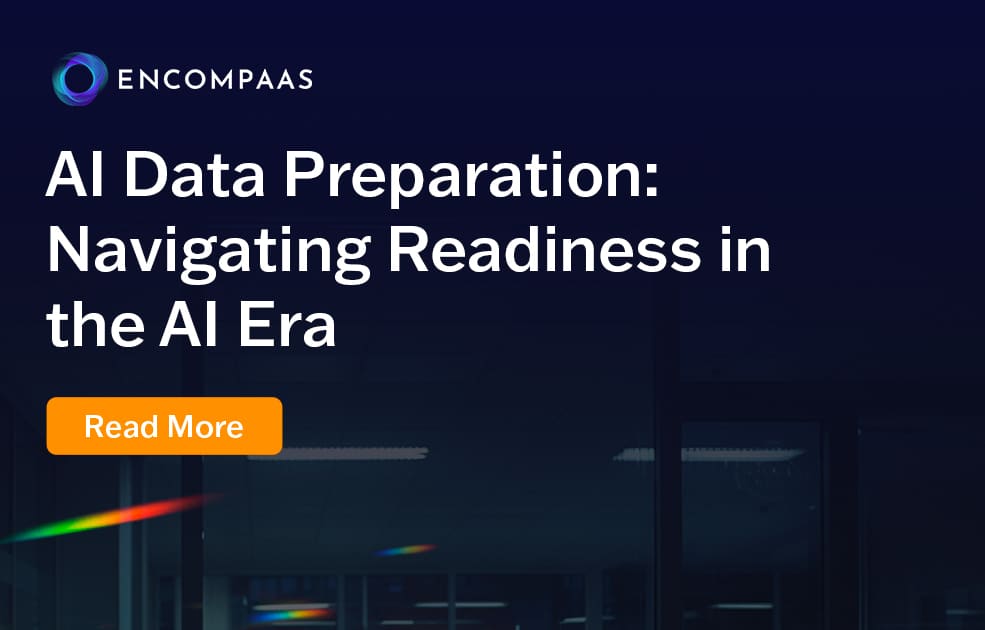What is Data Classification? Importance & Examples
Authored by EncompaaS - Oct 17, 2023

Data classification is more than just a technical term; it’s a critical process that aids in managing and protecting crucial data. With the explosion of big data, companies face immense challenges to efficiently categorize, search, and secure their ever-growing data repositories
.A well-implemented data classification strategy is key to confronting these challenges head-on.
Let’s delve into understanding the nitty-gritty of data classification processes and explore how companies can leverage their potential for effective data management.
Main takeaways from this article:
- Data classification is a process that helps organizations manage and secure their data effectively. It involves assigning categories to data to aid in its efficient and secure retrieval, use, and governance.
- Data can be classified into different types and levels, including content-based, context-based, or user-based, and levels such as Public, Confidential, or Sensitive. The selection of these categories largely depends upon the data’s sensitivity, as well as the value and legal requirements surrounding it.
- The practice of data classification can enhance an organization’s security and risk management, improve regulatory compliance, streamline data management, optimize data utilization, and reduce costs.
- Despite its crucial role, data classification is not without its challenges. These include determining the classification criteria, maintaining classification accuracy, training and awareness among employees, integrating with technology, and keeping up with changes.
- EncompaaS, a data management solution, offers features that can simplify the data classification process. It leverages advanced technologies like AI to automate the classification process and ensure better accuracy and consistency.
What is data classification?
Data classification involves organizing data into categories based on file type, contents, or other metadata. This systemized approach to managing data assets enhances security, streamlines compliance, and drives operational efficiency.
Benefits of classifying data within an organization
Proper data classification is not just a technical process—it’s a proactiveness that carries significant advantages for organizations. By investing effort and resources into systematic data classification, organizations enjoy a range of benefits, including:
1. Simplified data retrieval
Regular data classification makes it easier for organizations to locate and access relevant data quickly. Essentially, it acts like a well-organized library where you can find the book you need without scouring the entire place.
2. Reactive to proactive security
By assigning sensitivity levels to different data categories, companies can identify which datasets are most critical or sensitive. This ensures the implementation of enhanced security protocols to safeguard vital data against breaches or unauthorized access.
3. Regulatory compliance
With regulatory standards becoming more stringent, data classification helps organizations ensure they are in compliance by making it easier to handle restricted data or internal data appropriately. This reduces the risk of non-compliance penalties.
4. Informed business decisions
By understanding the value of the data they hold, organizations can make more data-driven decisions that improve efficiency and profitability. For instance, customer data that is compiled and categorized neatly lends itself to informed marketing strategies and broader business decisions.
5. Efficient data lifecycle management
Data classification is critical in managing the lifecycle of data within an organization. Understanding the nature and relative value of data can guide its storage, use, archiving, and eventual deletion, ensuring data relevance and efficiency at all points in its lifecycle.
Key components of a data classification system
Understanding the core concepts of data classification is essential, and a significant part of this understanding involves identifying the crucial components that make any data classification scheme efficient and reliable.
Here are five key elements that play a fundamental role in data classification:
1. Data identification
This is the first step in any data classification process. It entails recognizing different types of organizational data and associating them with their respective sources. This could be personally identifiable information (PII), proprietary business information, or even basic transactional data.
2. Data categorization
Once the data has been identified, the next component of the system is to categorize it based on predetermined characteristics such as relevance, sensitivity, or legal implications. Categories can be as straightforward as “public” or “private,” or they can be more specific, such as “Confidential,” “Sensitive,” “Private,” “Classified,” etc.
3. Classification policies
Policies and guidelines play a critical role in directing the classification process. These are typically created by an organization’s data governance or IT security team and dictate how different data types should be classified and treated. Classification policies help to standardize the process and minimize errors or inconsistencies.
4. Data labeling
Labels help determine how to handle and protect data. For instance, labels like ‘confidential’ or ‘sensitive’ indicate that a certain type of data requires a higher level of security and privacy protection. Labeling also aids in easy identification and efficient management of data.
5. Security controls
Post-classification, the appropriate security controls are applied based on the classification level of the data. These controls help in managing risks associated with data access, transmission, storage, and disposal. For instance, data marked as “sensitive” or “confidential” might require encryption and strict access control measures.
Importance of data classification
Data classification presents an indispensable solution to several modern enterprise challenges. Below, we delve into a more comprehensive understanding of its importance within an organization.
Critical role of data classification in managing and organizing data
Data classification offers a structured approach to managing and safeguarding corporate data. By categorizing data based on various factors such as sensitivity and business value, organizations can manage access controls more judiciously, thereby reducing the risk of data breaches and ensuring the confidentiality of sensitive data.
Undoubtedly, classification plays a crucial role in any data management strategy, helping to secure data both at rest and in transit.
Regulatory compliance and risk minimization
Modern businesses exist in an increasingly regulated environment. Regulations such as the General Data Protection Regulation (GDPR) and the California Consumer Privacy Act (CCPA) impose strict requirements for handling certain types of data.
Data classification helps organizations meet these requirements by identifying sensitive data and ensuring appropriate protective measures are implemented, thus minimizing risk exposure and potential penalties for non-compliance.
Impact on data privacy and protection strategies
Data classification is also pivotal in shaping data privacy and protection strategies. By understanding the nature and sensitivity of data, organizations can develop more effective policies and tools for protecting their information assets. Consequently, classification not only improves data security but also instills trust amongst stakeholders, amplifying the organization’s reputation for reliable data handling.
Types of data classification
1. Content-based classification
Content-based classification involves assigning categories to data based on its content or attributes. Whether it’s the presence of certain keywords, patterns, or other identifiable markers, the essence of data itself plays a key role in this classification type.
This method is particularly valuable for classifying unstructured data like emails, documents, and multimedia files.
2. Context-based classification
In context-based classification, the emphasis is on the circumstances surrounding data generation and usage. This may involve analyzing the source of data, its purpose, and the implied relationships between different data sets.
This method can be beneficial in understanding and classifying data based on real-world applications and relevance.
3. User-based classification
In user-based data classification, input is gathered directly from users regarding how they interpret or use data. Providing users the ability to classify data according to their perspective can help in tailoring data access, protection, and management strategies that align with user needs and priorities.
Data classification levels
Data classification levels provide an instrumental framework for decision-making around data access and control protocols. Let’s dive into some of the common levels
- Public: This classification level covers data that can be freely accessed without risking any confidentiality breach. Examples of public data include company websites or information in the public domain.
- Inside information: Often designated for internal use within an organization, this category covers data not meant for the public but not sensitive enough to require stringent access restrictions.
- Confidential: As the label suggests, confidential data requires a higher level of protection. Access is usually restricted to specific individuals who have a definitive need-to-know basis.
- Sensitive: This level is characterized by data that, if exposed, could pose serious risks to an organization’s objectives, reputation, or operations. Measures to protect sensitive data are typically the most robust, with the strictest access and usage controls.
Criteria for data classification
The process of data classification isn’t random. It’s guided by objective criteria to ensure a systematic and effective approach. The main factors that steer data classification can be remembered using the acronym SLV: Sensitivity, Legal requirements, and Value.
Let’s dive into these influencing elements:
- Sensitivity: One of the primary metrics for classification, sensitivity, determines the degree of impact that could be caused if the data were accessed or misused without authorization. Data such as trade secrets and customer data often fall into the highest sensitivity categories.
- Legal requirements: A variety of legislative frameworks enforce rules on how certain data types must be handled. For instance, the European Union’s General Data Protection Regulation (GDPR) imposes specific directives about personal data handling.
- Value: The business value of data is another crucial classification determinant. Usually, the higher the data’s value, the tighter the protection mechanisms wrapped around it. For instance, data that gives a competitive edge will receive a higher classification level.
A clear understanding of each data category enables your organization to implement appropriate measures, such as access controls, encryption levels, and data retention policies.
Data classification examples
Now that we’ve covered the theory of data classification, it can be easier to understand its role and importance through real-world examples.
From the office to your bank, examples of data classification are everywhere. We’ll examine five instances of data classification, each demonstrating its broad application and utility.
- Healthcare records: In the healthcare sector, patient data, composed of highly sensitive personal and medical information, is typically classified as Restricted or Confidential. This data is subject to stringent regulations like HIPAA and requires special handling to protect patient confidentiality and privacy.
- Banking and financial data: Banks classify data according to sensitivity and regulatory requirements. For instance, a user’s account details and transaction history are deemed Highly Confidential and require superior protection. On the other hand, promotional materials about bank services can be classified as Public.
- Human resources: Employee data is another example. Classification levels ranging from Public (job postings) to Confidential (salary details, performance reviews) dictate who within the company can access and share that information.
- Education sector: Universities and schools classify data from Student Records (usually treated as sensitive or confidential) to Training Materials (often tagged as Public or Internal).
- Retail industry: Data about customer purchasing behavior can be classified as proprietary information, leading to it being labeled as confidential, whereas inventory levels might be considered internal.
Data classification standards
Data classification standards provide a solid foundation for managing and securing data effectively, from broad frameworks across various industries to specialized protocols tailored for specific sectors.
Let’s delve deeper into some of the mainstream data classification standards and their uses.
- ISO 27001: Also known as the Information Security Management Standard, ISO 27001 provides a framework for establishing, implementing, maintaining, and continually improving an information security management system. It’s versatile and can be applied across various organizations, regardless of their size or the nature of their business.
- NIST Special Publication 800-53: The National Institute of Standards and Technology (NIST) initiated this standard to provide guidelines for the selection and specification of security controls for information systems supporting the executive agencies of the federal government.
- CIS Controls: The Center for Internet Security (CIS) Controls provides a prioritized set of actions that collectively form a set of best practices to mitigate the most common attacks against systems and networks.
Moreover, certain industries require the adoption of tailored standards geared towards their unique needs and regulatory requirements. Some key examples include:
- HIPAA (Health Insurance Portability and Accountability Act): The healthcare industry regularly follows HIPAA’s guidance on data classification. This act mandates the protection and confidential handling of protected health information.
- GLBA (Gramm-Leach-Bliley Act): In the finance sector, GLBA requires financial institutions to explain their information-sharing practices to their customers and to safeguard sensitive data.
Adherence to these standard data classification frameworks facilitates efficient data management and is crucial for meeting regulatory compliance, thereby reinforcing your organization’s data security infrastructure.
Challenges of data classification
Despite the numerous benefits, implementing a data classification system is not without challenges. As an organization, you may face difficulties ranging from defining criteria to ensuring consistency, stirring the need for effective solutions.
- Determining classification criteria: Establishing the criteria for classifying data can be complex, requiring a thorough understanding of the data’s nature, use, and legal/regulatory requirements.
- Maintaining classification accuracy: As the volume and variety of data grow, ensuring the accuracy and consistency of data classification across the organization becomes challenging.
- Training and awareness: Employees must be trained and made aware of the importance of data classification and the role they play in it, which can be a significant undertaking.
- Technology integration: Integrating data classification tools and processes with existing IT infrastructure and workflows can pose technical challenges.
- Keeping up with changes: Data classification systems must be flexible to accommodate changes in business processes, regulatory requirements, and the evolving data landscape.
Data classification with EncompaaS
The power of data classification in managing and securing your data is indisputable. EncompaaS’ robust solutions, including AI-driven classification and automated processes, can help navigate these complex tasks with greater ease and effectiveness.
Leverage this technology to enhance your data security and regulatory compliance.
Book a demo or reach out for more information and discover how to strengthen your data classification initiatives.
Book a demo
Let's get started
Experience the Power of EncompaaS!
Submit this form to see EncompaaS in action with a demo from our information management experts.
Request a demo today
Related Resources

- video
Understand Your Data & Harness Generative AI
Jesse Todd (CEO, EncompaaS) and Jaimie Tilbrook (CPO, EncompaaS) delve into the critical challenges companies face in managing their vast data landscapes, emphasizing the importance of understanding what data is, where it is located, its context, and its value.
Learn More




